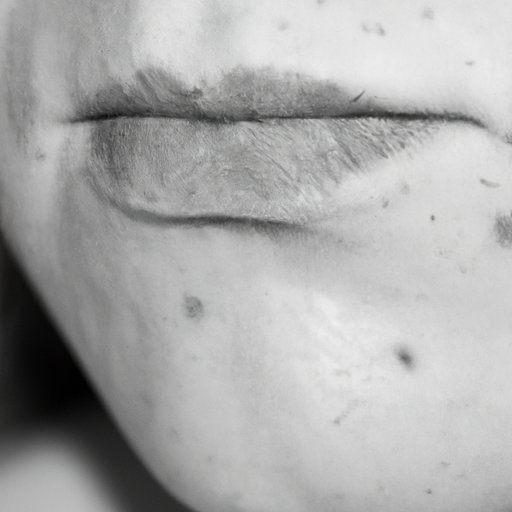
Introduction
Beauty marks have adorned the faces and bodies of humans for centuries and can be found in various forms and sizes. Some cultures see beauty marks as a sign of beauty and good luck, while others view them as a mark of distinction or even a portent of tragedy. Despite their different meanings in various cultures and societies, beauty marks have a universal impact on the perception of beauty and self-confidence. In this article, we explore the science behind beauty marks, their cultural significance, and what they mean for individuals.
Understanding the Basics of Beauty Marks: What They Are and What They Mean
Beauty marks, also known as moles or birthmarks, are small, dark spots on the skin. They can appear anywhere on the body and can range in size from tiny to large. There are different types of beauty marks, including junctional, compound, and dermal, and each has a different appearance and location within the skin.
Beauty marks have long been associated with beauty and good luck in many cultures. They are sometimes referred to as “angel kisses” or “beauty spots” and were even believed to hold magical powers. Today, beauty marks are still considered an attractive and unique feature.
Decoding the Significance of Beauty Marks in Different Cultures and Societies
The cultural significance of beauty marks varies depending on the country and context. In Chinese culture, a mole on the face is thought to be a sign of good luck, while in Indian culture, a mole on the forehead indicates wisdom and wealth. Some Native American tribes view a beauty mark as a sign of strength or as a symbol of identification or protection.
In Western cultures, beauty marks were once considered fashionable, with some individuals even drawing or painting fake beauty marks on their faces. With the rise of the fashion industry and media in the 20th century, beauty marks became more mainstream. Today, famous models and celebrities like Cindy Crawford and Marilyn Monroe have embraced their beauty marks as a part of their unique beauty.
Celebrating Uniqueness: The Beauty of Beauty Marks
Embracing beauty marks can be empowering and encourage self-confidence. Beauty marks are not only unique to individuals but can also enhance facial symmetry, which is considered a sign of beauty. Celebrating differences, including beauty marks, can inspire individuals to accept themselves as they are and foster self-love.
Exploring Common Myths and Misconceptions About Beauty Marks
There are several common myths surrounding beauty marks, including the belief that they are caused by pregnancy or exposure to sunlight. However, beauty marks are typically caused by genetics and are present at birth or develop during childhood.
Another common myth is that beauty marks can turn into cancerous moles. While it’s true that some beauty marks can become cancerous, it’s not very common. In fact, most beauty marks are benign and do not require medical intervention. However, it’s important to regularly check beauty marks for any changes in appearance or sensitivity.
The Science Behind Beauty Marks: How They Develop and Impact Our Skin
Beauty marks are commonly formed by clusters of pigmented cells, called nevus cells, which can grow only in the skin’s outer layer. These cells can be black, brown, red, or blue and can become darker during exposure to sunlight.
Excessive exposure to sunlight can cause damage to the skin, resulting in skin cancer. Therefore, it’s important to take precautions to protect skin from the harmful effects of the sun.
From Beauty to Danger: When a Beauty Mark Requires Medical Attention
While most beauty marks are harmless, some can become cancerous or precancerous. It’s important to regularly check beauty marks for any changes in appearance or sensitivity.
A dangerous beauty mark can have an irregular shape or color, bleed or itch, or change in size or texture. Regular screenings with a dermatologist can help detect any suspicious changes in a beauty mark.

The Artistic Value of Beauty Marks: From Marilyn Monroe to Cindy Crawford
Beauty marks have played an influential role in popular culture and have been embraced by many famous figures. Marilyn Monroe’s beauty mark above her lip became an iconic symbol of beauty and femininity. Supermodel Cindy Crawford has a beauty mark above her eyebrow, which has been influential in shaping the beauty standards of the fashion industry.
Conclusion
Beauty marks can have varying cultural significance, but they are generally viewed as attractive and unique features. While there are several myths surrounding beauty marks, they are typically benign and do not require medical intervention. Regular self-examination and screenings with a dermatologist can help detect any suspicious changes in a beauty mark. Embracing differences, including beauty marks, can inspire individuals to love themselves as they are and foster self-confidence.




